I very much doubt that.Maybe someone was helped by your post.
As Dave notes, they use a vented coil former instead; with the limited SPLs of these compact units, there's no advantage to a vented motor or spider as compression & VC heating are minimal. For larger units or those designed for higher continuous power though, both certainly can be valuable, and MA do have a vented spider for an upcoming driver.Mark audio driver doesn't have air pass between spider and magnet so I think driver have more softer spider and added air pressure dumping.
Sorry if I am wrong,it's only my imagination.
Scottmoose
"MA do have a vented spider for an upcoming driver."
We are waiting for new drivers.
"MA do have a vented spider for an upcoming driver."
We are waiting for new drivers.
The beginning and a small modification for the spikes.
Spike not too sharp.
Spike not too sharp.
Attachments
-
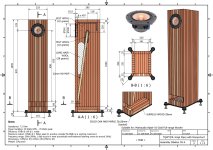 Assembly Sibelius CG-4_page-0001.jpg425.8 KB · Views: 342
Assembly Sibelius CG-4_page-0001.jpg425.8 KB · Views: 342 -
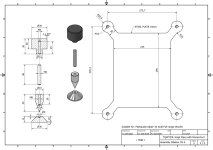 Assembly Sibelius CG-4_page-0002.jpg168.5 KB · Views: 247
Assembly Sibelius CG-4_page-0002.jpg168.5 KB · Views: 247 -
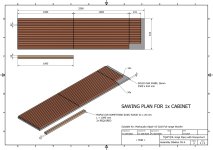 Assembly Sibelius CG-4_page-0003.jpg318 KB · Views: 181
Assembly Sibelius CG-4_page-0003.jpg318 KB · Views: 181 -
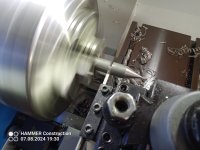 IMG_20240807_193041_390.jpg280.3 KB · Views: 158
IMG_20240807_193041_390.jpg280.3 KB · Views: 158 -
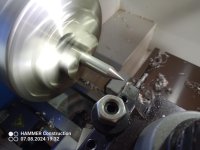 IMG_20240807_193243_950.jpg242.9 KB · Views: 139
IMG_20240807_193243_950.jpg242.9 KB · Views: 139 -
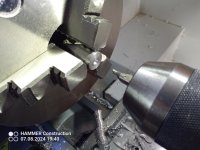 IMG_20240807_194024_943.jpg289.3 KB · Views: 133
IMG_20240807_194024_943.jpg289.3 KB · Views: 133 -
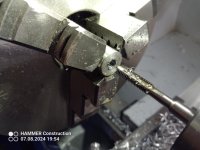 IMG_20240807_195428_924.jpg301.9 KB · Views: 135
IMG_20240807_195428_924.jpg301.9 KB · Views: 135 -
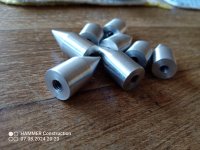 IMG_20240807_202014_024.jpg349.1 KB · Views: 135
IMG_20240807_202014_024.jpg349.1 KB · Views: 135 -
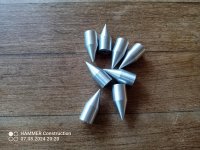 IMG_20240807_202044_881.jpg511 KB · Views: 190
IMG_20240807_202044_881.jpg511 KB · Views: 190 -
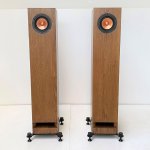 IMG_1837m.jpg201.3 KB · Views: 280
IMG_1837m.jpg201.3 KB · Views: 280
acko,
Hopefully the larger cone area will also help to move more air and provide more "slam" too, in addition to bass extension in terms of going lower in the Hz. 🙂
Hopefully the larger cone area will also help to move more air and provide more "slam" too, in addition to bass extension in terms of going lower in the Hz. 🙂
Yes, ‘slam’ is the word. The Sibelius that I have here has nice bass extension-dry, articulate and harmonious with the rest. There is some weight with bass also but understandably the driver size means cannot push further. Not a limitation though for most. Mid and top really good.
Hopefully, the MA200 does strong bass without sacrificing other performance
Hopefully, the MA200 does strong bass without sacrificing other performance
That’s the wrong way to do it for sure. It’s VERY important to remember that most rooms are fully modal below 80hz ( the standardized subwoofer crossover point for this reason) and the purpose of subwoofers is to excite those modes……nothing else……there is no desired direct sound from 80hz on down. The problem is you cannot excite a room evenly or effectively with only one driver, two, or even three. When you employ 4 sealed subwoofers around the room the difference is magical…..the bass is articulate and precise as the room and music are now fully coupled to eachother.Thanks @Scottmoose
If I am not completely wrong most of the listening rooms cannot handle the lowest frequencies. That’s why I don’t have understand why people are often so obsessed about. Pump the room full with 20 Hz, overload it and stample bass traps in the room to compensate it.
Bear in mind a 30 Hz wave is around 11 meters (37 feet) long. And, which type of music or instrument delivers lower than 30 Hz. It’s only an organ, an octabass or bass flute or any of its derivatives
Woofers or wideband drivers cannot effectively transition between the modal zone and the diffusion zone (typically 70-230hz) So if you take the Sibelius at face value, you’ll likely find an anechoic f3 somewhere above the modal zone and the rest is room gain…..the room just beginning to excite.…..not enough to compete with the other zones so you preserve the sense of clarity in the music. Take a speaker like the Sibelius and add in 4 small sealed subwoofers properly level matched though and once you’ve heard this, you will never go back to a stand alone 2 stereo speaker system.
Distributed subs after Welti (Harman) etc. are arguably the 'ideal' approach. Unfortunately, for many it does fall into the 'council of perfection' category, since it's not possible for them to use 4 (or even 2) subwoofers, so while I'd agree that if you can, it's worth pursuing -the truth is that you can also usually get extremely good results (as in 'good enough for requirements') with regular 2-channel systems. A good job too, or most of the systems for the last 6-odd decades would be classed as inadequate. Depends just how far down that rabbit hole you want or are able to go.
So I gather from these it is best to consider FR drivers/speakers that will do mid-bass to top very well and leave the lower ones to the subs. Can be pretty elaborate and expensive though with this arrangement especially with multiple subs needed
acko, I think it’s all about your use case. Even many multiways that might be considered more competent or safe to operate “full range” can see benefits from being relieved of the heavy lifting in the bottom couple of octaves, and let’s not forget that with home theatre systems the “reference” levels are generally higher, and bandwidth certainly wider than generally required for most music programme material. Some of the real crazy HT guys aren’t satisfied with anything less than infrasonics into the single digit frequency range, requiring a minimum of at least 4 18” subs, many thousands of watts, plus the dedicated 20amp circuits to get there. 😵
While now retired from active building, two of my favourite builds near the end of that 20 year period were larger 2ways with Alpair 7.3 and dual woofers CSS SDX7 and Alpair A12PW - both of which have been seen here numerous times. Currently running 2 systems: a 2.1 mostly casual listening music system with dual CSS VWR126&ERT26 and SDX7 sealed sub, and main system is Atmos 7.1.4 with 7 channels of Alpair/Pluvias and dual small subs (can’t remember the exact drivers, but Dave could fill that blank). All are crossed over to the LFE at between 80 -110Hz, and at my more modest listening levels, I’ve yet to crunch those metal cones.
The cross pollination between the feature set/functionality of DSP surround processing in modern multichannel HT gear and what we used to describe as 2 channel audio only allows for various degrees of bass management in even budget models of integrated amps/receivers and streamers, as exemplified by many of the ‘ChiFi’ products that are flooding the market with new model product cycles now seemingly shortened to less than a year in some cases.
While now retired from active building, two of my favourite builds near the end of that 20 year period were larger 2ways with Alpair 7.3 and dual woofers CSS SDX7 and Alpair A12PW - both of which have been seen here numerous times. Currently running 2 systems: a 2.1 mostly casual listening music system with dual CSS VWR126&ERT26 and SDX7 sealed sub, and main system is Atmos 7.1.4 with 7 channels of Alpair/Pluvias and dual small subs (can’t remember the exact drivers, but Dave could fill that blank). All are crossed over to the LFE at between 80 -110Hz, and at my more modest listening levels, I’ve yet to crunch those metal cones.
The cross pollination between the feature set/functionality of DSP surround processing in modern multichannel HT gear and what we used to describe as 2 channel audio only allows for various degrees of bass management in even budget models of integrated amps/receivers and streamers, as exemplified by many of the ‘ChiFi’ products that are flooding the market with new model product cycles now seemingly shortened to less than a year in some cases.
Little steps and modification 🙂.
Roughly knobs with M12 holes.
Only some chamfers to be added.
Roughly knobs with M12 holes.
Only some chamfers to be added.
Attachments
-
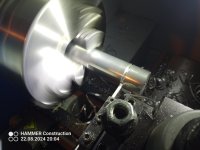 IMG_20240822_200434_737.jpg264.5 KB · Views: 74
IMG_20240822_200434_737.jpg264.5 KB · Views: 74 -
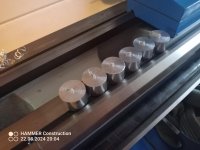 IMG_20240822_200441_814.jpg230 KB · Views: 63
IMG_20240822_200441_814.jpg230 KB · Views: 63 -
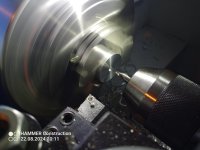 IMG_20240822_201143_261.jpg264.1 KB · Views: 56
IMG_20240822_201143_261.jpg264.1 KB · Views: 56 -
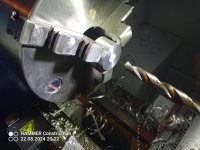 IMG_20240822_202215_050.jpg384.2 KB · Views: 51
IMG_20240822_202215_050.jpg384.2 KB · Views: 51 -
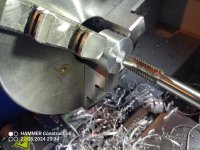 IMG_20240822_203419_631.jpg391 KB · Views: 57
IMG_20240822_203419_631.jpg391 KB · Views: 57 -
 IMG_20240822_204930_392.jpg382.4 KB · Views: 73
IMG_20240822_204930_392.jpg382.4 KB · Views: 73 -
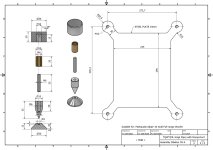 Assembly Sibelius CG-4_page-0002.jpg172.4 KB · Views: 75
Assembly Sibelius CG-4_page-0002.jpg172.4 KB · Views: 75
I’ve used 4 quite a few times….i find that in most rooms, placement options are very forgiving if you low pass them 1st order if you can. My best practice that produces the smoother measured response and overall better performance is to sacrifice some SPL for smoothing the modes with one of the four subs 180 out of phase of the others. This takes some experimenting to choose which to flip…….and with some humility I admit that it’s easier than doing the math to decide.Mayhem, it sounds as if you’ve implemented 4 subs. If so, what configuration did you use? I’ve seen 5 particular for this number - the most “optimal” posited as being in/on ceiling at 1/4 room dimensions from corners.
Ceiling subs?….i‘ve only done IB manifolds this way……and they simply don’t seem to care where you place them…..with enough voltage and SD, all they want to do is wreck your home and they get on with it quite effectively. If you ever get the opportunity to install a true IB solution, I say try it……..if the room has doors that can be closed, the pressurization is something else…….aids in digestion too…..no sh!t.
Did you ever try using the room modelling tools in REW to assist in aligning multiple subs? So far I’ve only played with two in the front wall corners, and the alignment routine recommended at a minor delay( .3ms, IIRC). I’ve been toying with the idea of building small vented boxes for a pair of Fosgate Audiophile subs I’ve not used in over 10 years, but that’d mean running more cabling or opting for wireless transmitters for the rear pair.
Since I’m picking your brain, any experience or observations on mixing sealed and ported in the same room, when miniDSP is available? I’ve always preferred sealed, but the car subs don’t model in WinISD as particularly happy with that alignment. I don’t have the budget for a quad of SVS SB16 Ultras😵
Since I’m picking your brain, any experience or observations on mixing sealed and ported in the same room, when miniDSP is available? I’ve always preferred sealed, but the car subs don’t model in WinISD as particularly happy with that alignment. I don’t have the budget for a quad of SVS SB16 Ultras😵
Hell's bollocks, isn't 33Hz good enough from an 8in standmount?and now there is the latest MA200 Hopefully more cabinet plans to take advantage accordingly, especially the bass extension🙂
I didn't even know Thomas had got that up yet, I only finished it yesterday.
Fb with default damping is 46.6Hz [nearly]. If you recall, the pensils are a hybrid between a traditional high-gain reflex and a TL, and are not designed for maximum extension in the sense of a typical T/S based vented box, so comparisons are difficult as the objectives and alignment goals are completely different. The alignment & practical extension in all the pensils varies (by design intent) depending on the damping the user applies, hence the removable rear baffle to allow ease of tuning by trimming the packing density. These are very much enclosures of the '40s - '50s, albeit with TL style control over driver behaviour below Fb.
Fb with default damping is 46.6Hz [nearly]. If you recall, the pensils are a hybrid between a traditional high-gain reflex and a TL, and are not designed for maximum extension in the sense of a typical T/S based vented box, so comparisons are difficult as the objectives and alignment goals are completely different. The alignment & practical extension in all the pensils varies (by design intent) depending on the damping the user applies, hence the removable rear baffle to allow ease of tuning by trimming the packing density. These are very much enclosures of the '40s - '50s, albeit with TL style control over driver behaviour below Fb.
- Home
- Loudspeakers
- Full Range
- Pearl Acoustic Sibelius